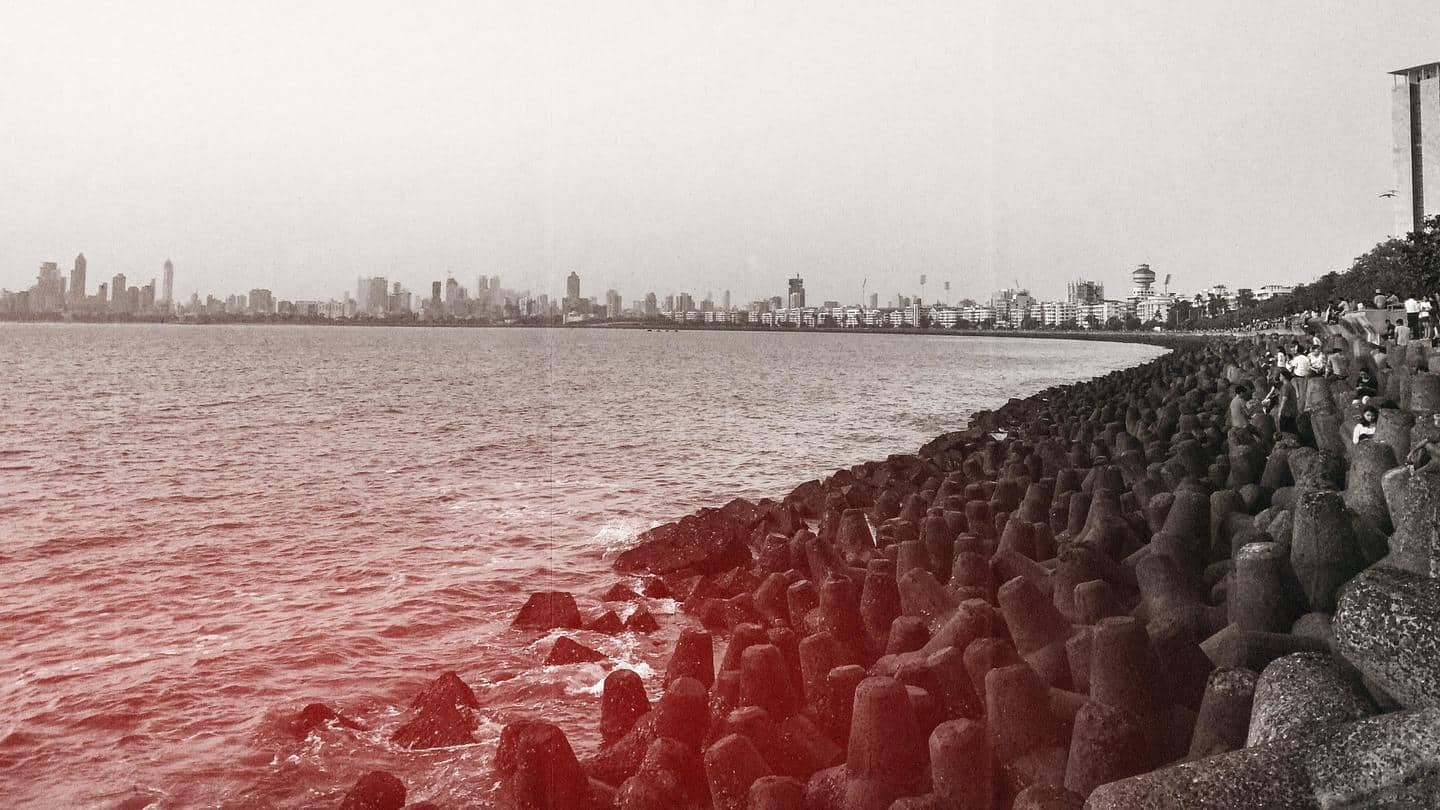
#NewsBytesExplainer: How less tetrapods causing tremors along Mumbai's Marine Drive
What's the story
Some residents living along the famed Marine Drive road have complained of "strange vibrations" in their houses at high tide.
They also wrote to the Brihanmumbai Municipal Corporation (BMC), claiming that the tremor coincided with the relocation of tetrapods as part of the ongoing Coastal Road Project (MCRP).
Do these strange-looking constructions along the beach have any significance?
Find out more about them here.
About
What exactly are tetrapods?
Tetrapod is the Greek word for "four-legged."
These are concrete structures with four legs that are put along coasts to prevent erosion and water damage.
Tetrapods were first employed to defend the beach from the sea in France in the late 1940s.
They are commonly used to produce an interlocking yet porous barrier that lessens the strength of waves and currents.
Weight
How much do the tetrapods weigh?
These are large structures, sometimes weighing up to 10 tonnes, and interlocked tetra pods act as a barrier that remains stable against the rocks when buffeted by waves.
Tetrapods, each weighing about 2 tonnes, were placed along Marine Drive in the late 1990s to break and dissipate waves and maintain the reclaimed shoreline in South Mumbai.
Do you know?
Why did BMC remove tetrapods from the Marine Drive?
They were temporarily removed to help carry out reclamation for the ongoing Coastal Road Project — 10.58 km of coastal road from Princess Street in Marine Drive to the Worli end of the Bandra-Worli Sea Link. There are over 6,000 tetrapods along Marine drive alone.
Intensity
How intense were the tremors in the buildings?
The tremors were felt by almost every inhabitant of the two buildings, Shreeniketan and Gobind Mahal (sea-facing buildings between G&F Road on Marine Drive), according to the residents.
They said the vibrations come for one second and in intervals for a period of 30-60 minutes in the afternoons.
"These vibrations feel like tremors akin to an earthquake," residents wrote in the complaint.
Response
How did BMC respond?
The BMC has given vibration monitoring tools to the site in order to evaluate the phenomenon's impact.
While the firm has not formally declared that the vibrations were caused by the removal of the tetrapods, it has consented to re-install the structures.
It stated that they will be replaced over the next two to three days at low tide.
Test
Experts, officials examined the spot area also
"To allay the fears of citizens of the said societies, BMC has asked the contractor to put the tetrapods back in place," the civic body has said.
"The contractor has started the work of placing tetra pods at the said location," it said.
On Monday, a team of executing agency and management consultants, along with civic staff, also visited the site.